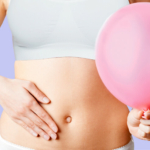10 pieces of advice for the prevention and treatment of varicose veins
With the hot summer season coming up, when symptoms of venous insufficiency tend to occur or become more pronounced, it is advisable to consider the origin and nature of this condition, suggesting plants that help strengthen the venous walls, provide relief from the symptoms of this condition, and the measures to adopt to correct risky behaviour.
Modern lifestyle, characterised by increasingly sedentary habits, prolonged and obligatory work postures, standing for long hours, use of transportation even for short journeys, insufficient exercise, too rich or unbalanced eating habits in relation to body needs, results in an increase in circulatory disorders, related to both arteries and veins.
Varicose veins
Varicose veins are, by far, the most frequent peripheral circulatory disease.
They are dilated and tortuous superficial veins with valvular insufficiency. The part most involved is the great and small saphenous venous system. The condition is associated with feelings of heaviness, aching and swollen legs, calf cramps, tingling or itching in the legs, presence of oedema, skin changes on the legs, appearance of visible capillaries (spider veins), varicose veins (varicose veins, haemorrhoids) and ulcerations.
The symptoms are aggravated by standing, towards the end of the day and by heat.
Here are ten simple useful suggestions for the prevention and treatment of varicose veins
- Avoid standing for long periods of time;
- Avoid exposure to heat sources and drinking alcohol;
- Engage in regular physical activity (walking, cycling) and sports (walking, cycling, swimming);
- Wear suitable shoes;
- Reduce excess weight and treat all forms of constipation;
- Avoid tight and constrictive clothing;
- Use support stockings;
- Rest with the bottom of the bed slightly raised;
- Use hydrotherapy (friction, jets of cold water, vascular exercise, walking by the sea);
- Take suitable medicinal plants (horse chestnut, witch hazel, holly, melilot).







